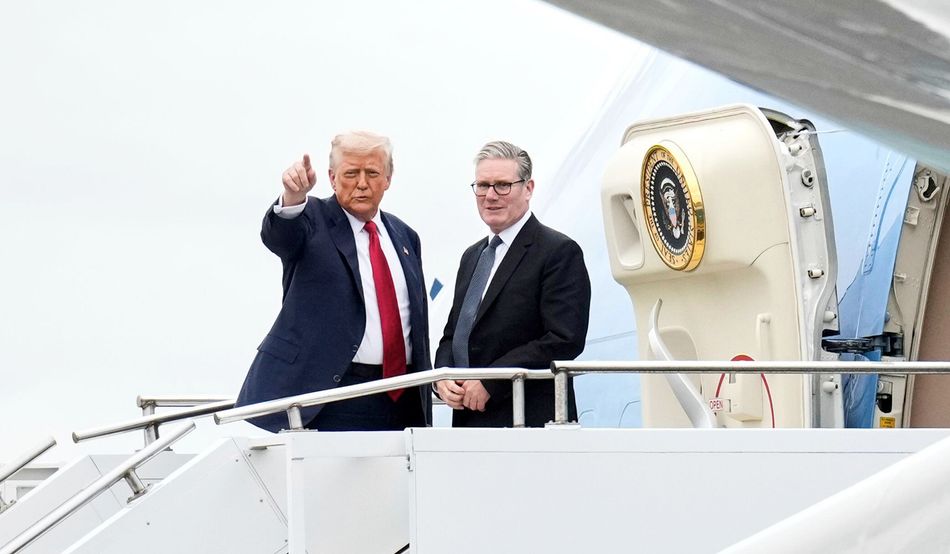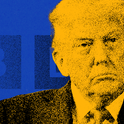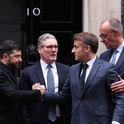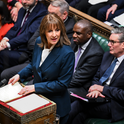Six months into Donald Trump’s turbulent second term, his relations with Europe, Britain included, amount to separation but not divorce. And so it will probably remain. For all Trump’s infatuation with dictators, there isn’t much chance of him turning Vladimir Putin or Xi Jinping into viable allies (although not for want of trying in the case of Putin). And for all his love of tariffs, he has seen the limits to which the bond markets are prepared to allow him to go without huge increases in interest rates.
On trade, this week’s deal with the EU is in the same ballpark as Trump’s earlier deal with Britain. A one-sided tariff of 10 per cent against Britain and 15 per cent against the EU will damage trade in both cases, but not upend it.
Partly this is because unilateral 10 to 15 per cent tariffs on imported goods, while a major breach of the post-Second World War era of free trade, are nonetheless not especially high compared to past eras. The Smoot-Hawley US goods tariffs of the 1930s peaked at an average of 59 per cent, at a time when there was little trade in services. But this is now a huge part of the trading relationship—and tariff free.
Trump had threatened the EU with tariffs of up to 50 per cent, plus retaliation against any counter measures. Either course would have been lethal to the US trade of German car makers, French wine makers and other great European industries. In contrast, they can live with—if not thrive under—15 per cent tariffs, not least because most of their trade is within the tariff-free European Union, which comprises 450m people and now has strong economic incentives to integrate still further.
Hence the EU decision to follow the British example and dress up a capitulation to the Trump tariffs as a “deal”. Hence, too, the decision by Keir Starmer—followed this week by Ursula von der Leyen—to appear in excruciating kowtowing media circuses with Trump to “seal the deal.” In both cases the circus master claimed triumph but made a show of friendliness, while Starmer and von der Leyen pretended not to be humiliated in the few words they were able to insert into the monologues.
It is vital for European traders that there is now as much stability as possible in the new tariff regime. That was another reason why both Britain and the EU went along with presenting their capitulations as “deals”, hoping—against hope, maybe—that this would make the mercurial Trump less likely to threaten to increase tariffs on a whim when they do something he doesn’t like.
Behind all this is massive geopolitical concern about the transatlantic defence and security relationship. This is partly why Europe’s leaders are so anxious to keep divorce off the table.
In respect of Ukraine and the future of Nato, the diplomatic alarums and excursions have been even more turbulent in the last six months than those in respect of trade. There were deep European concerns in the spring that Trump was seriously contemplating a divorce from Nato if he could get a deal with Putin on a ceasefire in Ukraine. The interest of Trump’s family businesses, and Trump’s fascination with Putin’s wealth and ostentation, were not hard to discern. Nor was the meaning behind his mantras about Europe “paying its way” and taking care of its own defence.
But not even Trump could carry mainstream Republicans in the US behind a complete pivot to support Russia. Despite Trump’s own attempts at a ceasefire, Putin continues to fight a full-scale war in Ukraine, in alliance with China, against strenuous Ukrainian and European resistance. Because of this, at the June Nato summit the US reaffirmed its commitment to Nato, provided Europe pays more of its bills. To huge European relief, the US’s greatly reduced support for Zelensky has not become outright support for the Russian enemy.
It is hard to know how far Trump might have gone had events followed a different path. If Putin had sought an alliance with Trump and cynically agreed a ceasefire in Ukraine as a sweetener, even a temporary one, might Trump have been seduced? And on trade, what would Trump have done had Europe followed the Chinese example and immediately retaliated against his initial “Liberation Day” tariffs in April?
Fortunately, we shall never know. There was no trade war, and the infatuation with Putin faded. The net result is a state of uneasy separation between the US and Europe—but some way from divorce.














